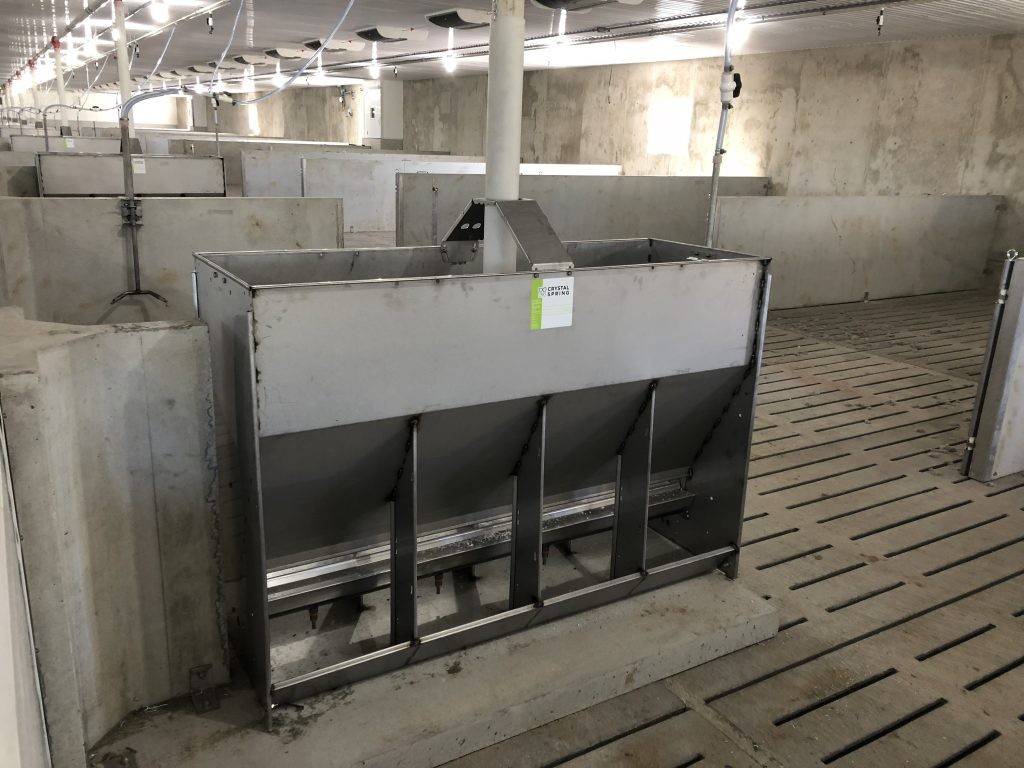There are two types of heating systems for the hog farms local heating and central heating. The radiators in the hog house are part of a central heating system that employs a central heating device to generate heat medium. There are many different types of “local heating” systems that may be used in a variety of settings; for example, a hot water-heated floor, an electric heating plate, an infrared lamp, etc. Ventilation equipment Ventilators designed for use in hog farms often have a large diameter, run slowly, and require little electricity.
Designing the hog house such that air travels throughout most of the surface, especially on the manure ditch, and avoiding creating any dead corners is essential for achieving the ventilation goal.
Machinery for chilling
While ventilation is an effective method of cooling a room, it can only reduce the temperature to a point where it is comparable to the air outside the room. Cooling systems, such as wet curtain-fan cooling systems, spray cooling systems, spray cooling systems, and drip cooling systems, are increasingly often used in contemporary hog farms. The last three kinds of cooling systems are not suitable for use in breeding and farrowing houses due to the excessive humidity they create. The wet curtain-fan cooling system is the current state of the art in evaporative cooling. Its global appeal may be attributed to the fact that its evaporative cooling efficiency is anywhere between 75% and 90%. You will need the best Crystal Spring Hog Equipment for those areas.
Cleaning and disinfecting medical equipment
Tools for on-site cleaning and disinfection in hog farms include high-pressure cleaners, flame disinfection, and knapsack sprayers, to name a few examples. The data suggest that the best outcomes may be achieved with a combination of flame sterilisation and drug disinfection. After the medication has been disinfected, the flame steriliser is utilised to complete the sterilisation procedure. The sterilising rate might be as high as 95%.
Cleaning materials
Urine and faeces ditches with leaking faecal floors are a familiar sight in today’s swine farms. When hogs defecate and pee on the faeces leaking floor, their urine drains into the ditch via the perforations, and the faeces that fall on the floor are trampled into the ditch. Reduce the potential for disease to spread in the lower manure ditch. To achieve this goal, it may be necessary to separate the hogs from the faeces.
The laying range the hog pen’s slatted floor protects may be used to classify the floor as either fully leakproof or somewhat leakproof. Both the farrowing pen and the nursery pen should be raised off the ground and equipped with a full leaking floor if they are built on a raised bed. Most hogpens employ a leaky floor that is anywhere between a third and a half full with manure. The hogs’ eating and sleeping areas have solid ground, whereas the drainage pond’s bottom is porous.
Conclusion
Most experts agree that the leak’s width is the single most critical technical aspect of a leaking floor. Blocks, strips, and netting are the most common shapes for feculent leakage floors, however there are many more options. Many materials are used, including cement, metal, plastic, and others.





